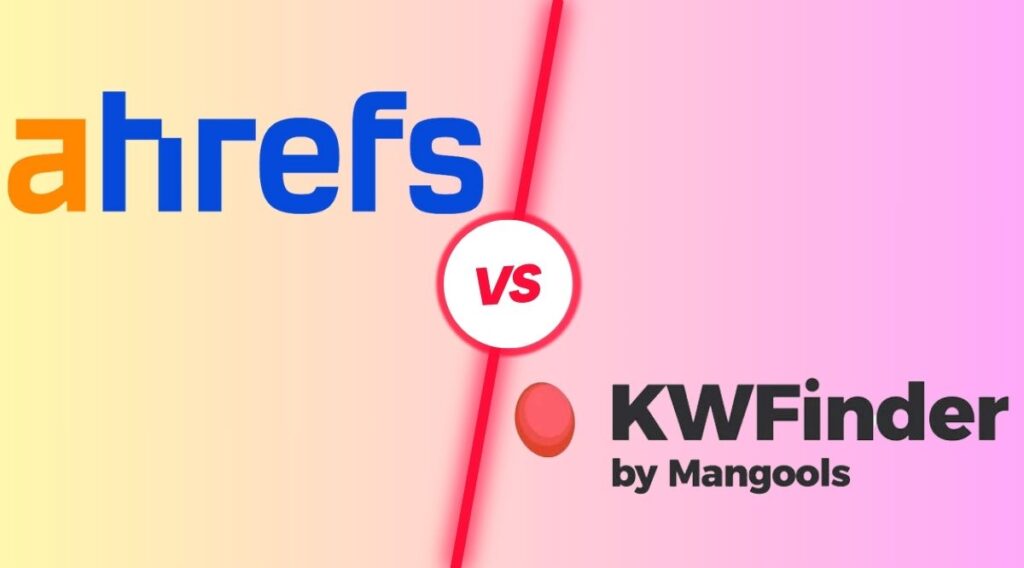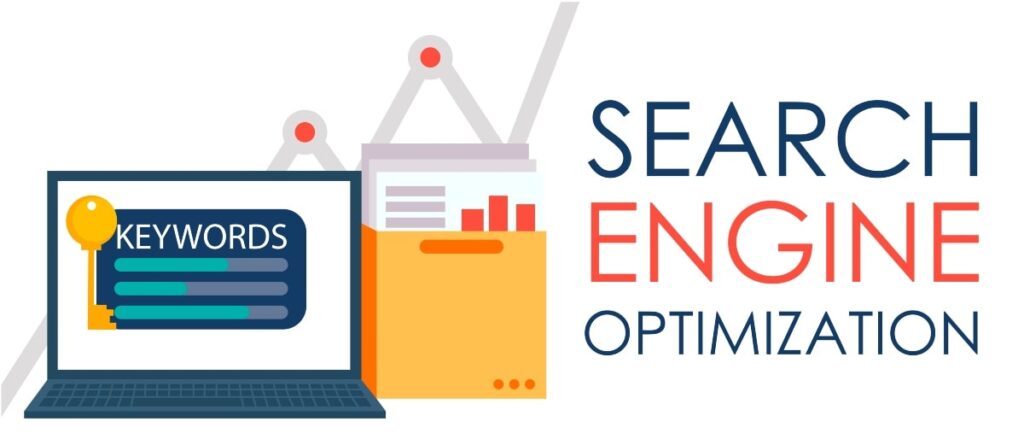Competing in the digital landscape demands not just a robust online presence but also a strategic understanding of your competitors. In the world of online advertising, particularly with Google Ads Competitor Analysis, thorough competitor research is the key to uncovering information that can help you improve your advertising campaigns. We will go over the subtleties of “Google Ads Competitor Analysis,” breaking it down into concrete steps.
Definition of Google Ads Competitor Analysis
When it comes to Google Ads, Competitor Analysis involves assessing and appraising the tactics, advantages, disadvantages, and overall effectiveness of other companies or marketers who are vying for the attention of similar audiences on the Google Ads platform. The goal of this analysis is to glean insights into how competitors are executing their ad campaigns, which keywords they are focusing on, and the success of their strategies. This process helps advertisers grasp the competitive environment and make well-informed choices to enhance their own Google Ads campaigns.
Importance in Digital Marketing Strategy
Competitor analysis in digital marketing, especially in Google Ads, is crucial for creating a solid strategy. Understanding the competitive landscape is essential for staying ahead in the dynamic online market. Analyzing competitors’ strategies, keywords, and ad placements provides valuable insights for improving and innovating one’s advertising efforts. This process helps optimize ad spend, improve ad relevance, and refine targeting to reach the desired audience. Monitoring competitors also allows for swift adaptation to market trends and industry shifts, ultimately contributing to a more informed and competitive digital marketing strategy on the Google Ads Competitor Analysis platform.
Objectives of Google Ads Competitor Analysis
The primary objectives of conducting Google Ads Competitor Analysis include
- Understanding Competitor Strategies: Gain insights into the keywords, ad copies, and targeting strategies your competitors are employing.
- Identifying Strengths and Weaknesses: Determine the strengths and weaknesses of your competitors to find areas where you can outperform them.
- Improving Ad Positioning: Analyze competitors’ ad positions to optimize your bidding strategy and improve your ad positioning.
- Enhancing Ad Creatives: Learn from successful ad creatives and design compelling content that stands out in the competitive landscape.
- Staying Adaptable: Keep track of changes in competitors’ strategies and adapt your campaigns accordingly to maintain competitiveness.
Why Conduct Competitor Analysis?
Identify Strengths and Weaknesses
Businesses can learn about their strengths and shortcomings in comparison to others in the market by analyzing their competitors. It involves understanding what competitors excel at (strengths) and where they fall short (weaknesses). Knowing these aspects helps a company reinforce its strengths, leveraging them for a competitive advantage. Simultaneously, recognizing competitors’ weaknesses presents opportunities for the business to fill those gaps and gain a competitive edge.
Benchmarking Performance
Competitor analysis serves as a benchmarking tool for businesses. It allows them to compare their performance against industry standards and competitors. This comparison provides a basis for setting realistic goals and objectives. Companies can find areas where they thrive and areas for improvement by comparing their performance indicators to those of their competitors. This process is essential for maintaining or enhancing competitiveness in the market.
Market Opportunities and Gaps
Examining competitors helps businesses identify gaps in the market, which can present new opportunities for products or services. Understanding what competitors offer allows businesses to innovate and differentiate themselves. By filling unmet needs or providing a unique value proposition, a company can attract customers and gain a stronger foothold in the market.
Adapt to Industry Trends
Monitoring competitors allows organizations to stay current on market trends, upcoming technology, and customer behavior changes. Adapting to these trends is crucial for remaining relevant in the market. By understanding what competitors are doing and how they are adapting to industry shifts, businesses can adjust their strategies accordingly. This adaptability ensures that a company remains in tune with the evolving landscape of its industry.
Enhance Pricing and Positioning
Businesses can determine competitive and profitable price points by evaluating how competitors price their products or services. This analysis aids in setting prices that appeal to customers while ensuring profitability. Understanding how competitors position themselves in the market enables businesses to differentiate effectively. It involves communicating unique value propositions to customers, emphasizing what sets the company apart from competitors. Effective positioning contributes to establishing a solid brand identity.
Enhance Marketing and Advertising Strategies
Analyzing competitors’ marketing and advertising activities provides valuable insights into practical strategies and tactics. It includes understanding the channels they utilize, the messaging that resonates with their audience, and the overall effectiveness of their campaigns. By observing the successful campaigns of competitors, businesses can learn from their strategies and apply similar principles to enhance their marketing efforts. This learning process helps in refining campaigns and improving overall efficiency in resource allocation.
Customer Analysis and Risk Assessment
Gaining an understanding of competitors’ customer demographics, preferences, and behaviors can offer valuable insights. This knowledge can be used to fine-tune marketing strategies, customize products/services, and foster better connections with customers. Recognizing potential risks posed by competitors enables businesses to foresee obstacles and take proactive measures to mitigate them. It allows strategic planning to counter competitive actions and protect their market position.
How to Monitor Google Ads Competitor Analysis (5 Simple Steps)
Unlock the knowledge to comprehend your rivals’ moves and transform their advertising strategies into your strengths. Here’s a step-by-step guide on how to monitor your competitors’ Google Ads effectively

Identify Competitor Ads on Google
Begin by searching for brands you already know or those you need to be aware of in terms of their online presence. Many brands running Google Ads Competitor Analysis use “Branded” keyword campaigns, ensuring they secure top positions for trademarked names and products. Explore keywords relevant to your business to discover unexpected competitors bidding on the same terms.
Utilize Google Ads Transparency Center
The Google Ads Transparency Center is a game-changer, providing quick insights into ads on Search, YouTube, and Display. Similar to Meta’s Ad Library, this tool allows you to search for your competitor’s business and view their recent ads across Google-owned platforms. Note that incorporating high-value keywords in your ad headlines can enhance quality scores.
Conduct Keyword Research for Budget Planning
Once you’ve identified competitors and their strategies, use the Keyword Planner within Google Ads Competitor Analysis to make informed decisions about your budget. Navigate to Tools & Settings > Planning, discover new keywords, and analyze the competition and top-of-page metrics. It helps determine the proper spending against competitors and ensures competitive bidding in relevant auctions.
Use Google’s Internal Tools for Performance Audit
After running your ads, leverage Google’s internal tools to assess performance. The Search auction insights report provides a visual overview of your performance compared to others in the same auctions. Keep an eye on your position and observe new competitors that may have surfaced.
Repeat the Analysis
Competitor analysis is an ongoing process. Regularly check on your competitors to identify new players in the space, analyze any shifts in messaging, monitor your impression share trend, and discover new keywords to incorporate into your strategy. Consistent monitoring on a monthly, quarterly, and yearly basis will keep you ahead of the competition.
Five Best Tools for Google Ads Competitor Analysis
Google Ads Transparency Center
The Google Ads Transparency Center is an official tool provided by Google. It allows advertisers to gain transparency in ads running on Google Search, YouTube, and Display. Please search for your competitor’s business and explore their recent ads across Google-owned platforms. This tool provides valuable insights into text ads, Google Display, and YouTube ads.
SEMrush
SEMrush is a comprehensive marketing tool that covers various aspects of digital marketing, including competitor analysis in Google Ads. Enter your competitors’ domains into SEMrush to access insights into their ad strategies, keyword rankings, and ad copies. SEMrush provides a broader view of competitors’ digital marketing efforts beyond just Google Ads.
SpyFu
SpyFu is another external tool that focuses on competitor research, covering both Google Ads and organic search strategies. Input your competitors’ domain names into SpyFu to uncover detailed information about their Google Ads performance. It includes data on keywords, ad variations, and historical performance, offering a holistic view of their advertising approach.
Ahrefs
Similarly, Ahrefs is an excellent tool for delving into keyword estimates and traffic. This set of tools provides valuable insights into trending keywords. For instance, you can input competitors’ URLs to receive a breakdown of the estimated keywords they are bidding on, their average ranking, and the landing pages they are utilizing for those keywords.
Wappalyzer
This handy plugin offers rapid insights into the tools and technologies competitors are using on their websites. It is one of the primary tools we utilize when examining competitors. Click the Wappalyzer plugin while browsing a website, and it will promptly display the active apps and plugins within their script.
Strategies for Google Ads Competitor Analysis

Identify Competitors
The first step is to recognize who your direct competitors are within the Google Ads space. It involves finding businesses that are either targeting similar keywords or operating in the same industry. You can do this through manual searches, relying on industry knowledge, or using tools like Google Ads Auction Insights.
Analyze Ad Copy and Messaging
Take the time to examine the ad copies and messaging used by your competitors. Understand how they present their products or services, the language they use, and the unique selling propositions they emphasize. This analysis is crucial for creating distinct ad copies for your campaigns, helping to differentiate your brand in the market.
Keyword Research
Perform comprehensive keyword research to identify the keywords that your competitors are targeting. Tools such as SEMrush, SpyFu, or Google Ads Keyword Planner can offer insights into the keywords your competitors are bidding on. Understanding high-performing keywords allows you to refine your keyword strategy for better targeting.
Explore Landing Pages
Visit the landing pages that are linked to your Google Ads Competitor Analysis. Analyze the design, content, and call-to-action elements on these pages. Understanding the user experience provides insights into what converts well for your competitors. Use this information to optimize your landing pages for improved performance.
Utilize Competitor Analysis Tools
Make use of specialized competitor analysis tools like SEMrush, iSpionage, or SpyFu. These tools provide extensive data on your competitors’ ad performance, budget estimates, and the strategies they employ. Regularly using these tools allows you to stay informed about your competitors’ activities, helping you adapt your strategy accordingly.
Monitor Ad Placement and Extensions
Examine your competitors’ ad placement on the Search Engine Results Page (SERP), as well as the ad extensions they utilize. Analyzing ad placement helps you understand their targeting strategy while studying ad extensions provides insights into the additional features they emphasize. This knowledge is valuable for refining your ad placement strategy.
Evaluate Bid Strategies
Gain an understanding of your competitors’ bidding strategies. Analyze whether they focus on top-of-page bids, target specific positions on the SERP, or employ automated bidding strategies. This information is crucial for optimizing your bid strategy, ensuring competitive ad placements, and maximizing the efficiency of your budget.
Track Performance Metrics
Regularly monitor key performance metrics for your competitors, including Click-Through Rates (CTR), ad positions, and conversion rates. Utilize tools like Google Ads Auction Insights and internal Google Ads reports to access this data. Analyzing performance metrics helps you adapt your strategy based on industry benchmarks and stay competitive in the digital advertising landscape.
Stay Updated on Industry Changes
Stay informed about industry changes and shifts in your competitors’ strategies. Subscribe to industry news, attend relevant conferences, and keep an eye on alterations in ad formats or policies. Staying updated enables you to adapt your Google Ads strategy to evolving market conditions, ensuring your campaigns remain effective and compliant.
Benchmark Against Industry Averages
Compare your own Google Ads performance against industry averages, considering metrics such as Click-Through Rates (CTR), conversion rates, and Average Cost Per Click (CPC). Benchmarking against industry standards helps you set realistic goals, identify areas for improvement, and ensure that your advertising efforts align with prevailing industry norms.
Future Trends in Google Ads Competitor Analysis
Here are some Anticipated Future Trends In Google Ads Competitor Analysis:
- Advanced Machine Learning Integration
- Cross-Channel Integration
- Real-Time Monitoring and Alerts
- Enhanced Predictive Analytics
- Deeper Audience Insights
- Automated Action Recommendations
- Privacy-Centric Analytics
- Augmented Reality (AR) and Visual Search Insights
- Integration with Voice Search Data
- Blockchain for Transparency
Expert Tips for Effective Competitor Analysis

Define Clear Objectives
Before diving into competitor analysis, clearly define your objectives. Understand what specific insights you aim to gain and how these insights will contribute to your business goals. Whether it’s identifying market trends, refining ad strategies, or improving product positioning, having well-defined objectives guides the analysis process.
Use a Combination of Tools
Rely on a variety of tools for a comprehensive analysis. Combine Google Ads Competitor Analysis tools like Auction Insights with third-party tools such as SEMrush, iSpionage, or SpyFu. Each tool provides unique perspectives on competitors’ strategies, ad performance, and keyword targeting. Using a mix of tools ensures a more holistic understanding.
Focus on Key Performance Indicators (KPIs)
Identify and prioritize key performance indicators relevant to your business goals. Whether it’s click-through rates (CTR), conversion rates, or ad positions, focus on metrics that directly impact your success. Regularly monitor these KPIs for both your business and competitors to track performance and adapt strategies accordingly.
Understand Target Audience Behavior
Go beyond surface-level data and delve into understanding your competitors’ target audience behavior. Analyze the demographics, preferences, and engagement patterns of their audience. This insight helps in tailoring your strategies to reach and engage a similar or differentiated audience effectively.
Benchmark Against Industry Standards
Benchmark your performance against industry averages and standards. Compare your metrics, such as CTR, conversion rates, and average CPC, with industry benchmarks. It not only provides a context for your performance but also helps in identifying areas where you may need improvement or where you outperform competitors.
Common Mistakes to Avoid
Here are some common Mistakes To Avoid When Conducting Google Ads Competitor Analysis:
- Ignoring Comprehensive Research
- Overlooking Ad Copy Context
- Relying Exclusively on Tools
- Ignoring Seasonal Variations
- Neglecting Long-Term Monitoring
- Copying Strategies Blindly
- Neglecting Ad Testing
- Disregarding Landing Page Experience
- Overemphasizing Short-Term Metrics
- Neglecting Regulatory Compliance
Conclusion
In the intricate dance of digital advertising, mastering Google Ads Competitor Analysis is akin to wielding a mighty sword. It allows you to cut through the noise, understand the nuances of your market, and position your brand for unrivaled success. Embrace the insights gained from competitor analysis as a compass guiding your strategic decisions, and watch as your Google Ads campaigns ascend to new heights of effectiveness and ROI.
Frequently Asked Questions (FAQs)
How can I identify my Google Ads Competitor Analysis?
To identify your competitors in Google Ads, use tools like the Auction Insights report within the Google Ads Competitor Analysis interface. This report provides valuable data on who you’re competing against in the ad auctions, including impression share, average position, and overlap rate.
What metrics should I focus on when analyzing my Google Ads Competitor Analysis performance?
Key metrics to focus on include ad spend, click-through rate (CTR), conversion rate, and average cost-per-click (CPC). Additionally, analyze the competitors’ ad copy, landing pages, and targeting strategies to gain insights into their overall approach.
How can I remain ahead of the Google Ads Competitor Analysis?
Stay ahead by continuously monitoring and adapting your campaigns. Regularly analyze competitor strategies, adjust your bidding strategy, optimize ad copy, and test new keywords. Utilize ad extensions, target specific audience segments, and leverage Google’s automated features for efficiency.
What tools can I use for in-depth Google Ads Competitor Analysis?
Tools like SEMrush, SpyFu, and Adbeat can provide detailed insights into competitors’ keywords, ad copies, and performance metrics. Google’s Auction Insights report and Google Trends are also valuable for understanding market trends and the competitive landscape.
How important is it to benchmark my performance against Google Ads Competitor Analysis?
Benchmarking against competitors is crucial for optimizing your Google Ads Competitor Analysis strategy. It enables you to find areas for improvement, grasp industry benchmarks, and adapt your efforts to remain competitive. Regular benchmarking ensures that your advertising efforts align with market trends and customer expectations.



































